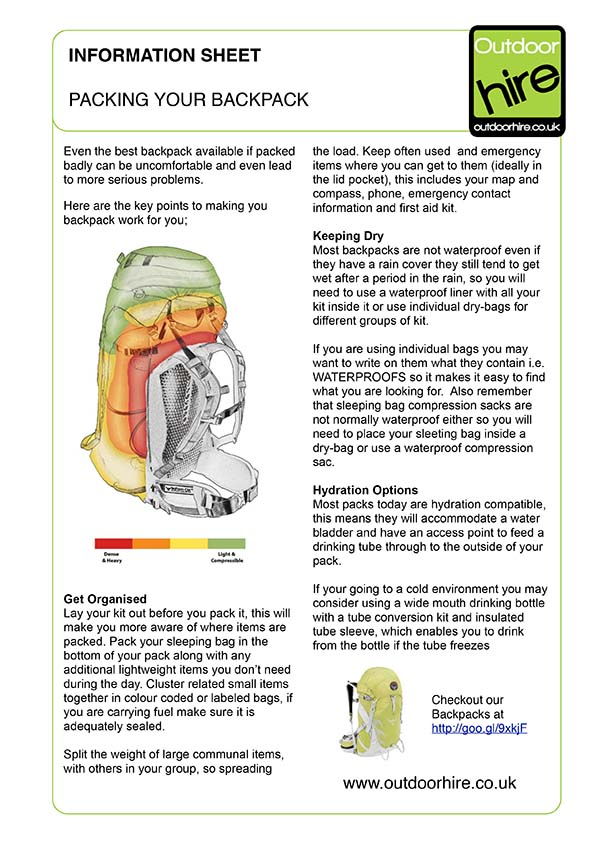Even the best backpack available if packed badly can be uncomfortable and even lead to more serious problems. Here are the key points to making you backpack work for you;
Get Organised
Lay your kit out before you pack it, this will make you more aware of where items are packed. Pack your sleeping bag in the bottom of your pack along with any additional lightweight items you don’t need during the day. Cluster related small items together in colour coded or labeled bags, if you are carrying fuel make sure it is adequately sealed. Split the weight of large communal items, with others in your group, so spreading the load. Keep often used and emergency items where you can get to them (ideally in the lid pocket), this includes your map and compass, phone, emergency contact information and first aid kit.
Keeping Dry
Most backpacks are not waterproof even if they have a rain cover they still tend to get wet after a period in the rain, so you will need to use a waterproof liner with all your kit inside it or use individual dry-bags for different groups of kit. If you are using individual bags you may want to write on them what they contain i.e. WATERPROOFS so it makes it easy to find what you are looking for. Also remember that sleeping bag compression sacks are not normally waterproof either so you will need to place your sleeting bag inside a dry-bag or use a waterproof compression sac.
Hydration Options
Most packs today are hydration compatible, this means they will accommodate a water bladder and have an access point to feed a drinking tube through to the outside of your pack. If your going to a cold environment you may consider using a wide mouth drinking bottle with a tube conversion kit and insulated tube sleeve, which enables you to drink from the bottle if the tube freezes.




